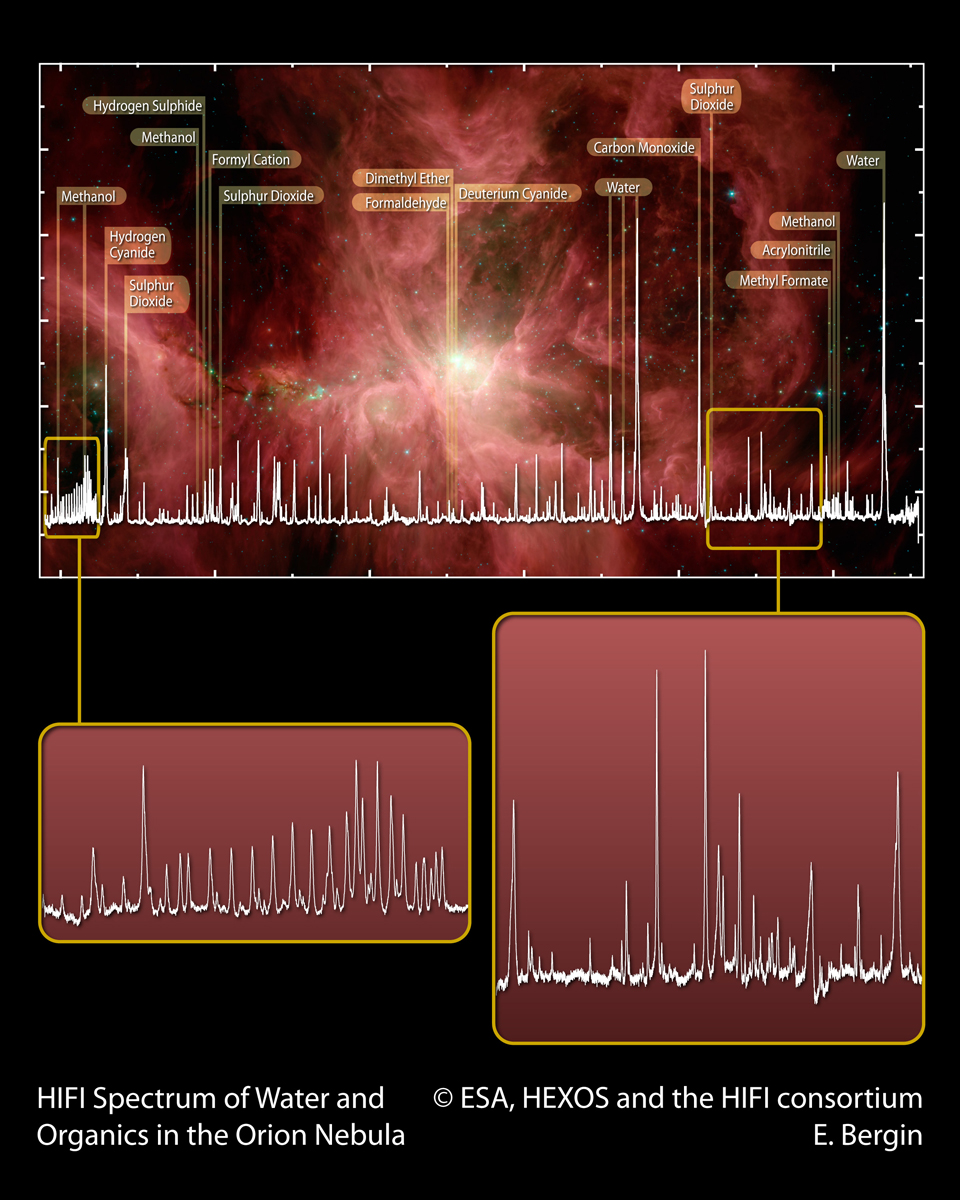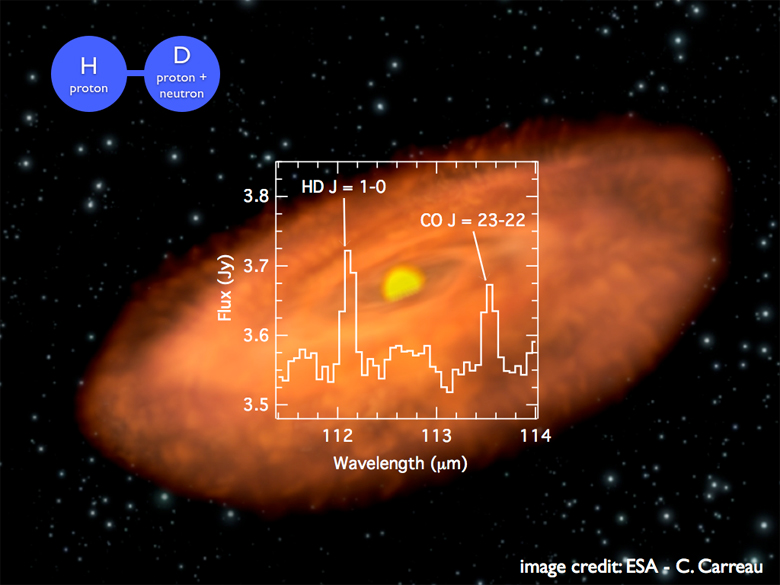Planetary systems that take shape around young stars are fashioned out of material leftover from the stellar formation process. This material, which consists mainly of molecular hydrogen (H2) gas, orbits the star in a protoplanetary disk for several millions of years before it condenses into planets or is dispersed by winds driven by the radiation of the star. In addition, trace amounts of cosmic dust (think tiny seeds of sand in space) and other gas species are present in the disk.
The mass of a protoplanetary disk is key in determining its ability to form a planetary system, as well as the mass and other properties of its future planets. Astronomers believe that the primordial disk that gave rise to our solar system had a mass equivalent to at least 10 times the mass of Jupiter – corresponding to about one percent of the Sun’s mass. Although astronomers have observed numerous protoplanetary disks in great detail, determining their masses is notoriously difficult. Essentially, the mass of the H2 gas is hidden to our telescopic eyes. Even estimates of mass in the best-studied case – the disk around nearby young star TW Hydrae – have ranged by factors of 10 or more.
I have been leading a team that uses heavy molecular hydrogen, hydrogen deuteride (HD), as a tracer of the hidden H2. Hydrogen deuteride, which is made up of one hydrogen atom and one deuterium atom, can be used as a tracer of the disk’s main constituent: molecular hydrogen. The difference between HD and H2 is that HD’s asymmetrical structure with one heavier atom causes it to radiate more intensely than molecular hydrogen, which consists of two hydrogen atoms. Thus, if detected astronomers can determine the amount of HD gas present in a disk, and we know the conversion from HD mass to molecular hydrogen.
We have found that these disks appear to have greater amounts of mass than expected from other observational techniques, hinting that gas giants like our Jupiter could still be forming. A sample of these detections is given in the spectrum; the sharp peak that is labeled is evidence that HD is present in this disk.

We have been able to apply this technique to just a handful of young systems; because HD emissions arise at wavelengths our own atmosphere interferes with, such measurements can only be made from a space-based observatory. My team was fortunate to be able to use the Herschel Space Observatory to perform observations from 2009-2013. In the future, we hope to observe more systems with the HIRMES instrument that will fly on the Stratospheric Observatory For Infrared Astronomy (SOFIA) and, later, the Origins Space Telescope.
An unexpected result of our research into the mass of disks is that we are also able to study their chemical composition. Astronomers generally determine chemical abundances relative to hydrogen, as this is the most prevalent element in the universe. By knowing the amount of total H2, constrained by HD, we are able to more directly determine and study the chemical composition of material during the stages in which planets are born. Why might we want to know this? Planets may contain an imprint of their formation in their chemical makeup, and we might be able to use this to track the origins of our own planets as well as those of the hundreds of exoplanets that have been detected to date.

The detection of a hydrogen deuteride emission in the nearby TW Hydrae planet-forming disk is shown superposed over an artist’s impression of its system.

With HD, we can measure the total gas content of planet-forming disks. Here is an analogy demonstrating the weight of a planet-forming disk in terms of the number of Jupiters. Jupiter is the most massive planet in our solar system, but it contains only 0.1 percent of the mass of our Sun.
